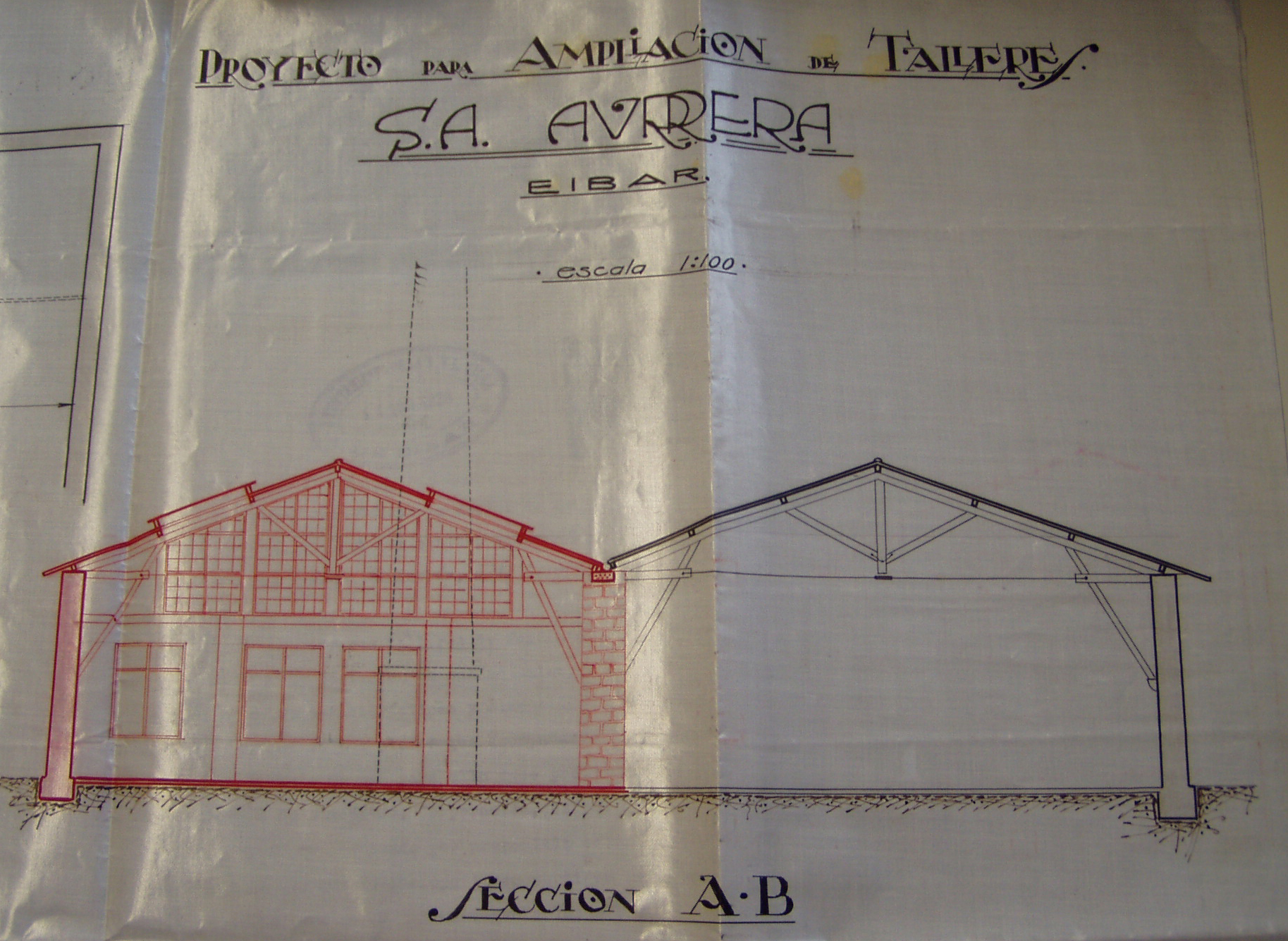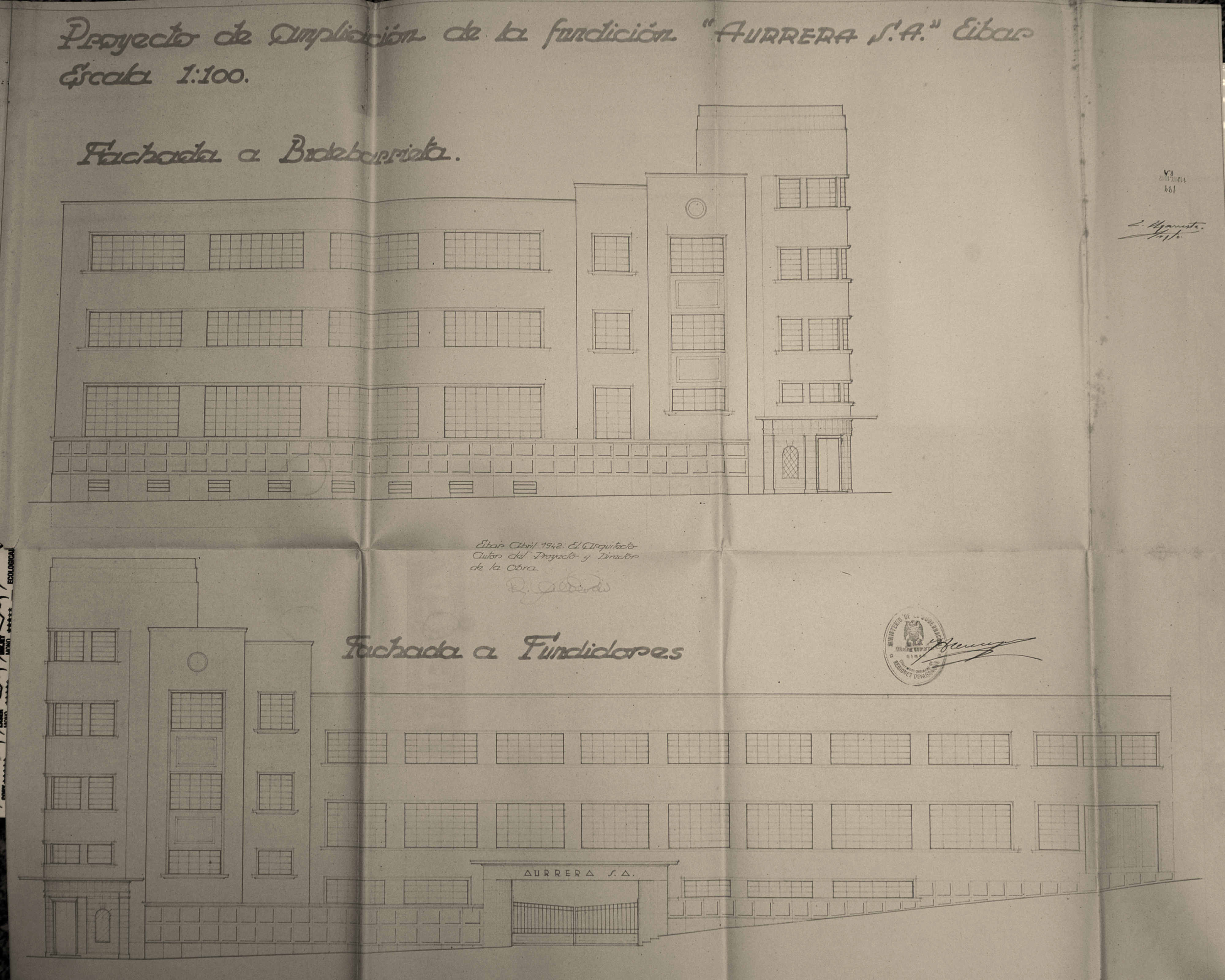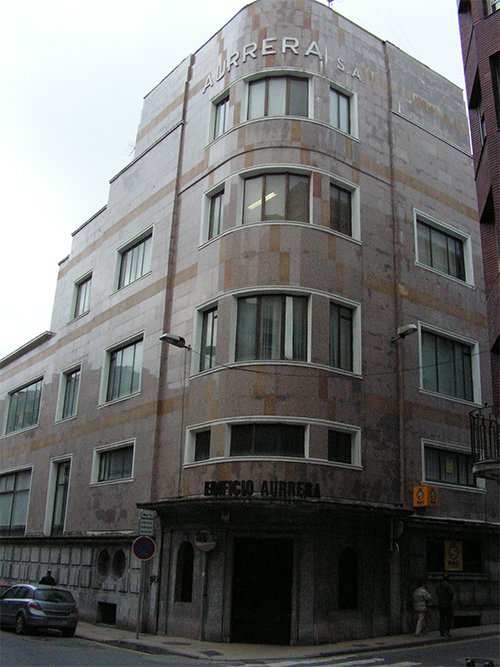
ARCHITECT: Raimundo Alberdi Abaunz 1940
Although the building that now stands in Bidebarrieta St was built in 1940, the history of Fundiciones Aurrera dates back to the first half of the 19th century, and it chronicles the fortunes of one of the protagonists of the rise of Eibar as an industrial centre.

The company âÃÂÃÂSociedad AnÃÂónima AurreraâÃÂàwas founded in 1833, and its origins are to be found in the booming arms industry in Eibar. It was created with a clear aim, to provide local gun makers with a conveniently located malleable iron foundry which could supply them quickly and efficiently, and avoid dependence on other companies in the area. A clear indication of the immediate success of the company can be found in the increase of its start-up capital, which in the space of five years rose from 40,000 pesetas, with which the company had been set up, to 80,000, doubling the value of the first 250 shares issued. In fact, each and every share had been acquired by the Eibar gun makers themselves, so keen were they to see the foundry prosper.

This economic growth was reflected in the expansion of the companyâÃÂÃÂs premises. The site chosen for the foundry was an area in Bidebarrieta St, next to the hillside where, in later years, the area known as Arane would flourish. By the beginning of the 20th century Fundiciones Aurrera covered an area of 2,500 m2, and had all the equipment and facilities their business would require: a moulding building and furnaces, a plant with machinery, warehouses, officesâÃÂæ A state-of-the-art factory, a foundry that would eventually lend its name to the place where it was located: even today, the street that is perpendicular to Bidebarrieta where the factory stands is called âÃÂÃÂUrtzaileâÃÂà(Smelters), clearly alluding to the work that went on there for over a century.

As was the case with so many other companies, the destruction of EibarâÃÂÃÂs industrial fabric in the bombardment and subsequent fire on the 25th of April 1940 forced Fundiciones Aurrera to build a new foundry. The firm commissioned the construction of the new office building to one of the most prominent architects in the 1930s and 1940s, Raimundo Alberdi Abaunz, who was responsible for a large number of the buildings that went up during the reconstruction of Eibar after the Civil War. He designed a building with a reinforced concrete structure and a terraced roof, following the precepts of the architectural Modern Movement and, besides, the style that was used repeatedly in Eibar, due to its versatility.

The result is a functional building, with a delicately curved corner topped with a kind of tower, with four floors to hold the offices. This contrasts with the rest of the building, which is only a two-storey structure and has a much more horizontal design. This architecture has been deservedly praised as a fine example of functionalism, with smooth geometric lines, and with a pronounced curve where the offices are located. However, this building is much more than simply an attractive chamfered corner. Aurrera was one of the most important foundries, capable of producing more than 100,000 kg of malleable iron parts. What Raimundo Alberdi designed in 1940 was not just an office block, but a factory producing iron parts. And it is these simple, less elaborate structures, hidden from view and crammed into the centre of the block, that give a purpose to the architecture that we can contemplate from Bidebarrieta St. Nowadays the former premises of Fundiciones Aurrera have been transformed into offices and workshops, and the faÃÂçade underwent extensive renovation in the 90s, but it remains one of the most emblematic buildings in the town.
 Anemona Studioa, 2015, Eibar www.anemonastudioa.com
Anemona Studioa, 2015, Eibar www.anemonastudioa.com Ondartez www.ondartez.com
Ondartez www.ondartez.com

